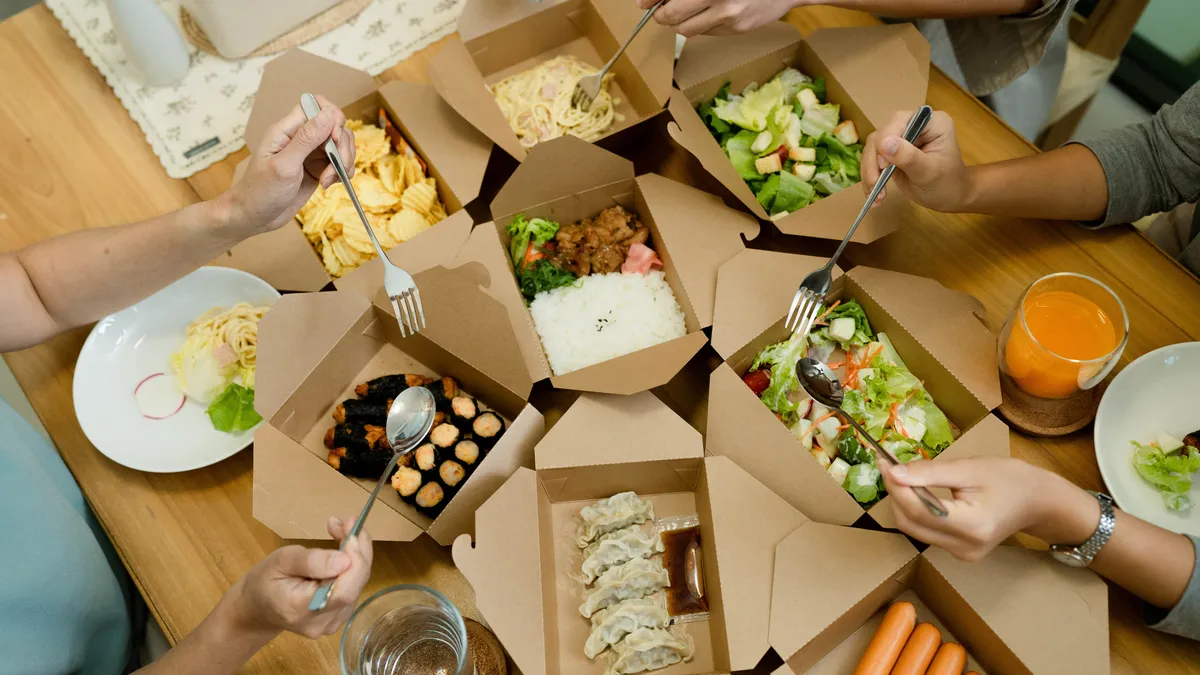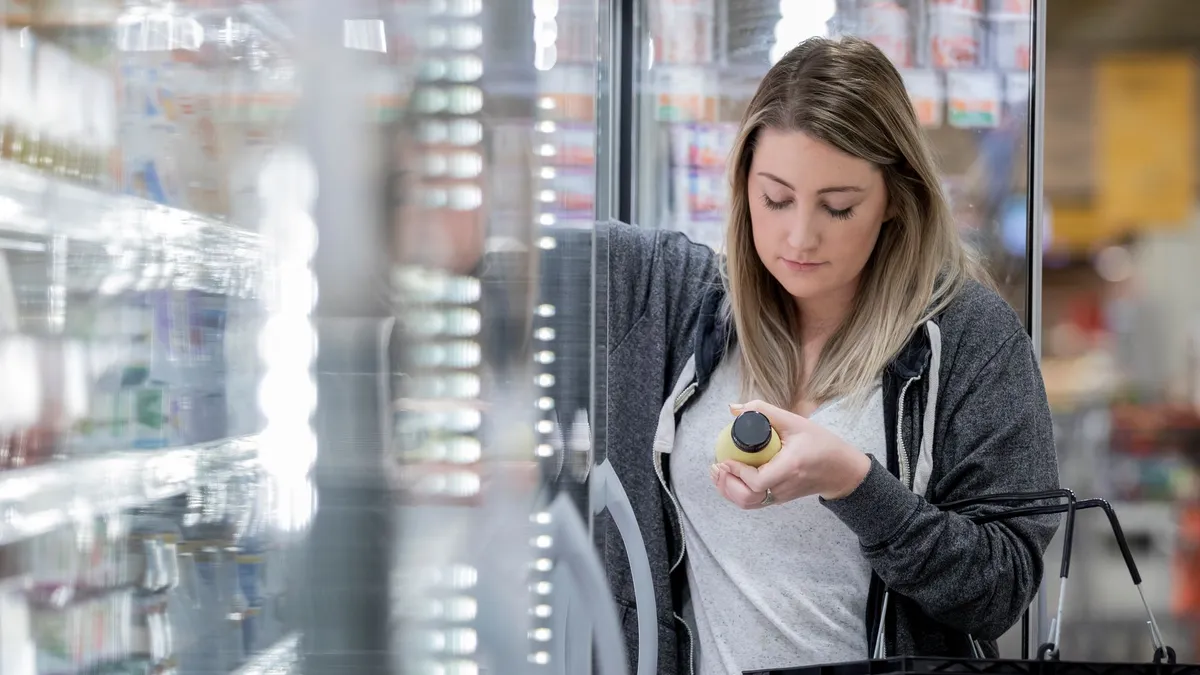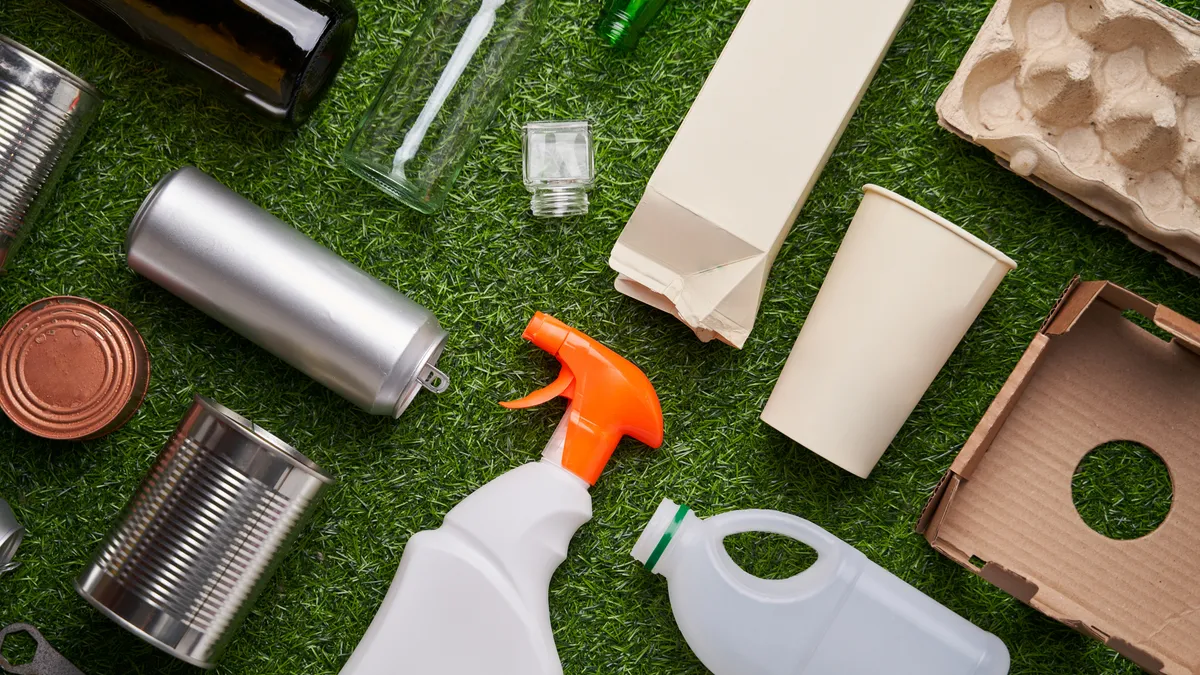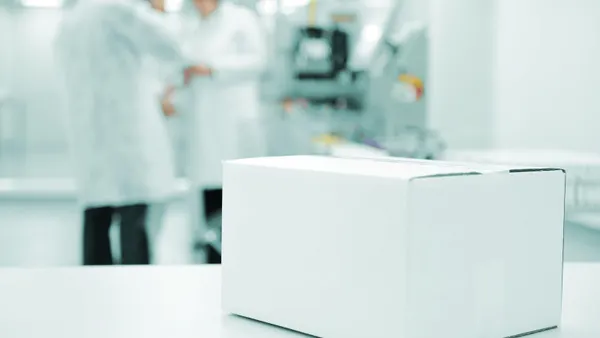Dive Brief:
- The Single-Use Material Decelerator and partners this week shared an updated version of the Understanding Packaging Scorecard, a web-based tool that since 2021 has aimed to help food companies choose food service ware and packaging that is chemically safe and environmentally sustainable.
- Updates include user experience improvements as well as changes that consider packaging materials in the context of different food temperatures, fat content and acidity when scoring different packaging options for chemicals of concern, examples of which include PFAS or BPA.
- The tool scores in multiple categories — plastic pollution, chemicals of concern, climate, water use, sustainable sourcing and recoverability — in part based on life cycle impact assessment calculations. Other partners on the initiative include Compass Group, Aramark and Sodexo.
Dive Insight:
The collaborative effort seeks to equip purchasers with “a single yardstick” to make sustainable packaging decisions based on the latest science. “Tools like this are exactly what procurement professionals need to integrate sustainability into their daily work,” said Johanna Anderson, director of learning and member engagement at the Sustainable Purchasing Leadership Council, in a press release.
However, although sustainability is getting a lot of emphasis these days, sometimes there’s less attention or awareness around chemicals of concern, said Alissa Sasso, manager for safer chemicals with EDF+Business. The Environmental Defense Fund is one of the supporters of the tool.
Sasso referenced the example of recent research showing that many paper straws, considered a potentially positive alternative to single-use plastic options, contain per-and polyfluoroalkyl substances. And supply chain transparency on which chemicals are in packaging remains a challenge, Sasso said.
Ultimately, while reusables often score well, scorecard results for the best materials depend on use case, Sasso explained. EDF explained in a press release that a paper container lined with chemicals of concern intended to hold hot pizza, for example, would score lower than if it were going to hold cold salad, “because chemicals migrate more easily into food at higher temperatures.”
In advancing safe and sustainable packaging, food service companies serve as important communicators with the rest of the supply chain. “We're definitely focusing on engaging more of those food service and food ware companies to begin that conversation with their packaging manufacturers,” Sasso explained.
Lara Seng, senior manager, sustainability field support for Sodexo, said in a press release that the company “is working to integrate a sustainability metric based on the UP Scorecard to enhance our operational packaging selection guide and make it easier for our teams to navigate the complexities of packaging and identify the most environmentally friendly selections.”















